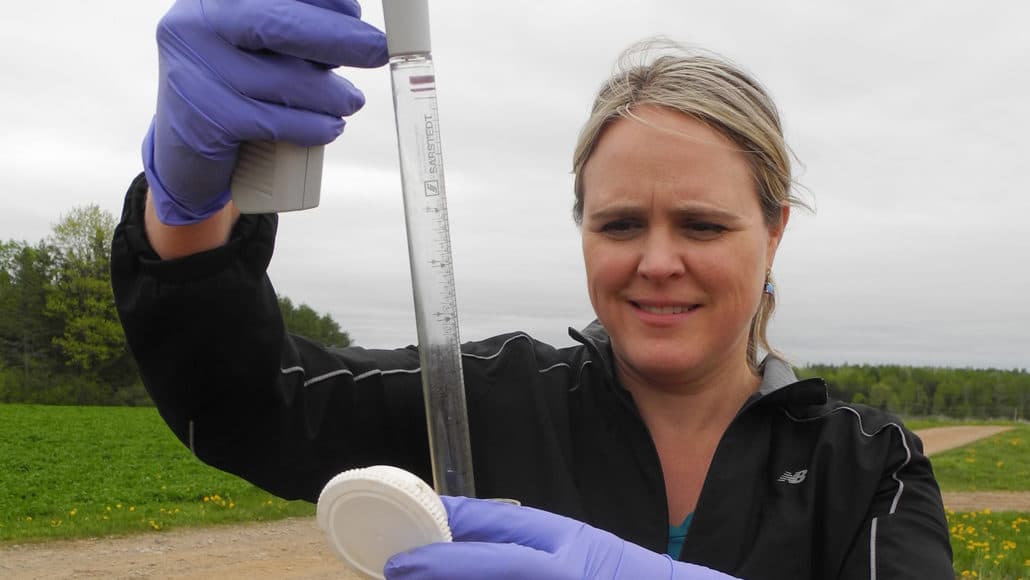[deck]A new weapon for controlling common scab in potatoes is showing promise.[/deck]
Scientists who are employing bacteria in fight against common scab are encouraged by the results so far. Researchers at Agriculture and Agri-Food Canada’s Fredericton Research and Development Centre in New Brunswick say a type of good bacteria that can be sprayed on a potato field is showing promise as a control for the disease.
Soil microbiologist Claudia Goyer and her team will be conducting more in-depth trials this summer after seeing evidence that the bacteria Bacillus, which is not harmful to humans, can reduce the severity of common scab caused by another bacteria, Streptomyces scabies.
While it does not pose a health concern, common scab produces lesions on the skin of potatoes that makes them unmarketable, resulting in millions of dollars in losses for Canadian growers every year.
Goyer has spent 15 years searching for an effective control agent specifically for common scab, of which none currently exist. The common scab pathogen can live on decomposing material in the soil and does not need a potato or root crop to remain alive. Nevertheless, the disease will become more aggressive if the same crop is grown year after year without rotation.
The presence of common scab and its severity varies by season and field to field. Cropping history, soil moisture, soil acidity, and soil texture are largely responsible for the variability of the disease in any given year.

Limited Control Options
Once a potato producer has common scab in their fields, there are limited options for effective control of the disease. Current control practices include a combination of proper soil condition management techniques involving irrigation and acidity levels in the soil as well as crop rotation methods.
For example, dry soil conditions during tuberization dramatically increases common scab severity, acidic soils with lower pH levels can help to reduce the severity of infestation, and crop rotation can be very important to help reduce the level of inoculums in potato fields. The use of resistant potato cultivars is also recommended to control common scab.
While some growers say they’ve had good success controlling common scab with soil fumigants such as chloropicrin, Goyer says the Bacillus bacteria may be an alternative to fumigants that is a targeted and more environmentally friendly way to deal with the disease.
“The disease is difficult to control,” explains Goyer, who contends chemical treatments for common scab have generally met with limited success. “A new control method for common scab would be very good for farmers and the environment.”
Enter Goyer’s new research and the prototype product her team has developed to fight common scab.
“Last summer we used it and succeeded in controlling common scab. This year we’re doing it again to make sure we can reproduce the results, and we’re adding a second site in Prince Edward Island where we’re going to experiment with different conditions and soils,” Goyer says.
“The key is to have something competitive enough that it can survive for a few months after you apply the bacteria to the soil, i.e. until tubers starts to form, the critical period for common scab infection.”
The Bacillus bacteria are applied to the field when the tubers are first planted, and can be applied again once the plants begin to grow. The bacteria colonize the root and prevent common scab from taking hold. Goyer’s team saw a 50 per cent reduction in common scab in its experiments.
It looks promising, but Goyer says another five or six years of development will be needed until the product becomes available for growers to use.
“The next step is to make sure that we formulate the product well i.e. that we add compounds that will sustain the bacteria and make it more efficient, and that’s what will set this product apart from others — it’s something geared specifically to common scab. It will be different than what’s out there already,” she says.
“Once we see we have reproducible results, we’ll need to find an industry partner to commercialize the product — but first things first.”











